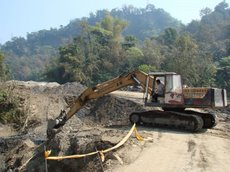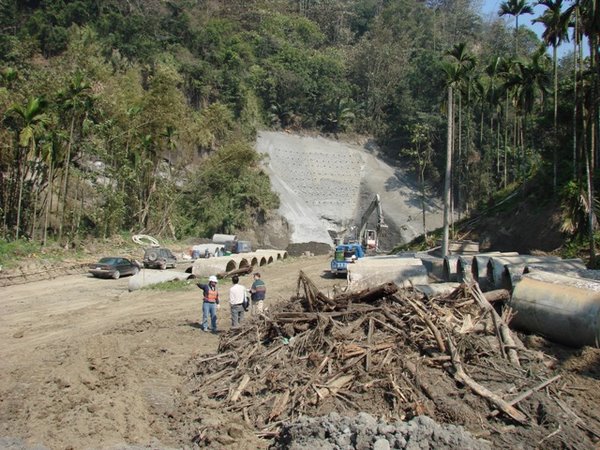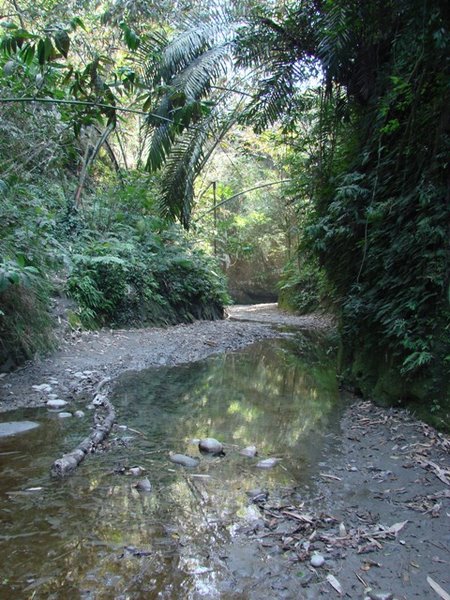Taiwan National Coalition Against the Hushan Dam
It is a well-known fact that the area in Yunlin County in which the Hushan Dam is to be built is geologically unstable. Many nature lovers will also be aware of the importance of Yunlin’s forests to endangered bird species such as the Fairy Pitta Pitta nympha. The EPA, however, is choosing to turn a blind eye to these issues by giving its blessing to a construction project that is both scientifically and economically unjustified, and unnecessary for the present and future needs of the local area.
Among the protected birds in the area, the Fairy Pitta receives the greatest attention due to the fact that the disputed region is the world’s most densely populated Fairy Pitta habitat. The Hushan reservoir will cause the fragmentation of an area that hosts not only the Fairy Pitta, but also many other birds, reptiles and amphibians, and acts as an important biological corridor.
As destructive as it promises to be to Yunlin’s ecology, the dam itself will prove equally fragile when it fails to withstand earthquakes of the magnitude previously experienced in the area. The Chelongpu Fault, for instance, which in 1999 was the source of Earthquake 921, lies beneath the surface of the earth less than 6 km from the reservoir site, yet Hushan’s structural capacity fails to reach that required to absorb such an impact. Also, the hills surrounding the dam site are vulnerable to landslides, and large quantities of sediment lie upstream, meaning that the reservoir will be prone to muddying and choking, and therefore fall considerably short of its intended supply capacity. Research suggests that, even disregarding these geological factors, the capacity estimated by the Central Water Resources Bureau may exceed actual capacity by almost 50%.
The EPA, however, has very little to say about all of this. Although the EPA has carried out a survey of birds in the area, this took place at a time of year when no survey could possibly reflect the true population of Fairy Pitta. Birds are counted according to the number of calls heard, and the Fairy Pitta is known to call mostly during the mating season in May. The EPA, however, chose a different time of year, and therefore counted very few Fairy Pitta. For this reason, the EPA did not feel it necessary to mention the bird in any of its reports. Earthquake frequency and the softness of the earth around the site (due to earthquakes) have also received insufficient attention from the Agency, and no relevant analysis been required of the construction companies. Since it was in 2000 that the Agency first approved the project, this apathy flies in the face of Taiwanese environmental law, which states that, if construction has not started within three years of approval, an environmental discrepancy analysis must be submitted. (The only discrepancy analysis that has been produced relates to structural changes to the dam).
So what benefits does the project offer the people of Yunlin? Indeed, it may be anticipated that a new reservoir will ease the burden presently forced upon water supplies by local industry; more than half of water requirements in the county are those of Yunlin Offshore Industrial Park, which Hushan is intended to supply. Yet this ratio is in itself a sign of the imbalance of water rights in the area, and prompts the question, is such industrial development sustainable? The Park is already responsible for high levels of energy and water consumption, and for heavy pollution. Is this really the kind of development Yunlin wants to support? For it will ultimately be the people of Yunlin, and indeed the whole of Taiwan, who will pay for Hushan Reservoir; the water is to be so heavily subsidized by public funds that industries will pay only NT$11 of the estimated NT$21.3 per tonne supplied. This is hardly compensation for the loss of an irreplaceable ecological treasure.
The case against Hushan Reservoir is overwhelming, but the Fairy Pitta cannot defend itself if we fail to stand up to those who authorize the destruction of its habitat. The EPA cannot be allowed to exercise such total neglect of its duties by simply brushing aside the concerns of environmentalists, and pandering to the desires of businessmen. If this project goes ahead, it will make a travesty of our environmental law and our commitment to sustainability.
Saturday, May 5, 2007
The Hushan Damnation of the Fairy Pitta
Posted by
Wild at Heart Legal Defense Association
at
4:06 PM
![]()
Subscribe to:
Post Comments (Atom)








No comments:
Post a Comment